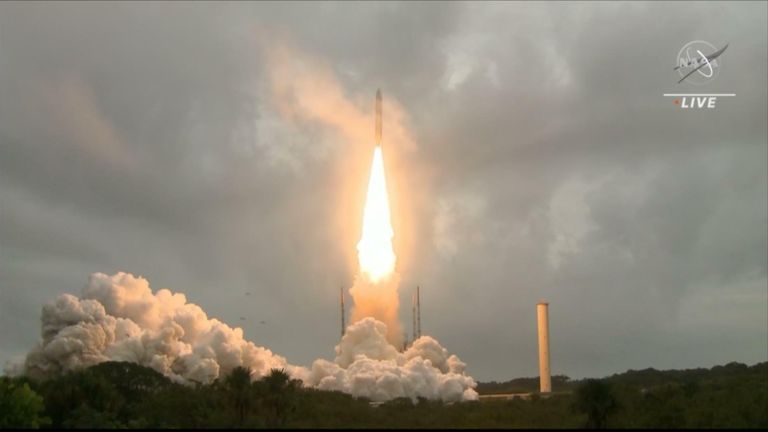The “deepest and sharpest infrared image of the distant universe to date” has been revealed.
The photo was made public by NASA and is the first to be taken by the world’s most advanced telescope, the James Webb Space Telescope (JWST).
“We are looking back over 13 billion years … and we are going beyond … this is just the first picture and since we know the universe is 13.8 billion years old, we are almost back to the beginning,” he said. NASA administrator Bill Nelson.
“It will be so accurate that you will see if the planets are habitable or not. And when you look at something as big as this we will be able to answer questions that we don’t even know what the questions are yet.”
The image released tonight shows a cluster of galaxies called SMACS 0723 and is the first of a series to be revealed in the coming days.
It is the farthest that humanity has ever seen in both time and distance, closer to the dawn of time and the edge of the universe, with part of the image showing light just after the Big Bang.
JWST isn’t just a 32-year-old Hubble Space Telescope upgrade. It is a whole new way of looking at the universe.
The telescope’s light-gathering ability – the best measure of its power to “see” things – is more than double that of Hubble. In addition, the $ 10 billion machine is designed to see objects using infrared light.
Although invisible to the human eye, infrared is the color of the oldest and faintest objects in the universe.
Scientists and engineers from three space agencies, NASA, the European Space Agency and the Canadian Space Agency, worked for 20 years to complete the telescope.
Along the way, several moves were made to cancel the mission as costs and deadlines were exceeded.
The first major challenge for JWST’s designers was to take a telescope larger than two side-by-side double-decker buses into space.
This required Webb to fold in on itself, origami-style. Its huge 6.5m shiny gold mirror was even made to fold into three segments.
To the surprise of even some of those who built it, JWST unpacked flawlessly once it was safely in orbit in January, with every segment of its mirror now perfectly aligned.
The next challenge was to ensure that Webb was cool enough to “see” infrared light – any hot object produces it.
Although space is cold, a glance at the sun’s rays or at the waste heat of its own systems would blind the telescope’s infrared vision just like the headlights of an oncoming car at night.
JWST’s instruments are cooled to -267 degrees centigrade. To protect it from the Sun, the telescope orbits the Earth on the other side of the Moon, shrouded in its shadow.
Its instruments are also protected and dissipate from heat by five layers of tennis court-sized sunshades that unfolded even once the telescope was in orbit.
Read more:
The astronaut returns after 355 days in space
NASA publishes audio recording of a black hole
The image of the “door” to Mars generates conspiracy theories
Although scientifically important in themselves, the image of today and those that will follow tomorrow are a first taste.
They were chosen to showcase JWST’s capabilities to an entire generation of scientists who will use the orbiting observatory and also to the public who paid for it.
Many discoveries in astronomy and astrophysics come after multiple observations of distant objects over the course of months or years.
This is especially true when studying distant worlds in other solar systems. But can we really expect a 13.8 billion-year-old universe to quickly give up its secrets?

